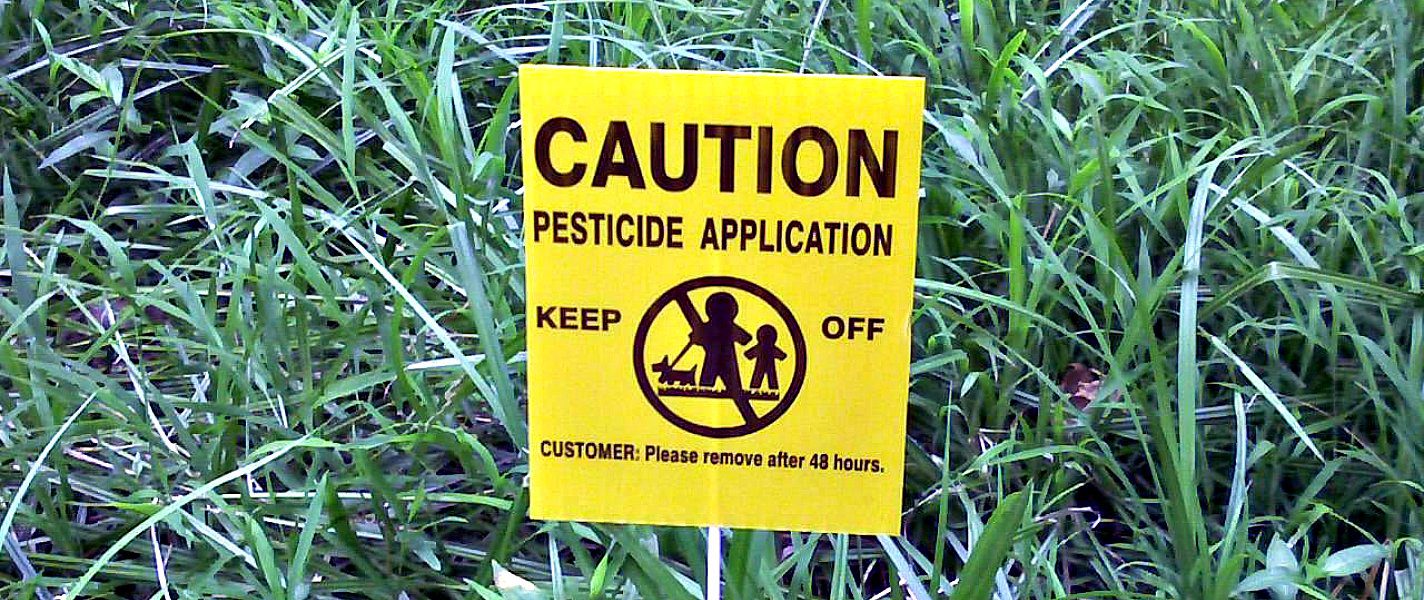There is a story about a young boy who grew up on a dairy farm in the small town of Bradford, Maine in the ‘60s. As a child he worked the farm with his grandfather, hauling buckets, planting, mucking, shoveling manure and hay, and doing all the things farmers did in those days.
He also mowed the lawn. This was his favorite “chore”. As he grew, lawn care grew with him – into a business – a big business with 27 employees and hundreds of customers. He had created a booming operation, employing all the new and advanced technologies, weed ‘n’ feed, and other miraculous chemicals of the time.
He even tells the story of feeling the pride of spraying the lawn of a hospital to rid it of weeds – a lawn where recovering cancer patients took daily strolls to heal from their illness.
He began to experience strange and unexplained nose bleeds, shortness of breath and other health issues. A trip to his doctor led to the advice that he “cease applications of lawn chemicals” – which he did. His health problems cleared and he went on to change his company and publish a book: The Organic Lawn Care Manual. His name is Paul Tukey.
Chemical Sprays Don’t Stop at your Door
About this time of year, walking the neighborhood with Mosley, my two-year-old yellow lab pup who is more apt to walk (drag) me, I can’t help but notice all the little yellow warning signs shoved into lawns that have been chemically treated and wonder at what we’re thinking?
These are the lawns where our pets and children run, roll, skid, play, eat the dirt, and stain their knees – all on grass that is doused with chemicals.
Maybe it’s time for us to re-think this?
Here are some facts you may not have known:
- In the past three decades, more than 100,000 chemicals have been approved for commercial use in the United States.
- The EPA permits the use of more than 200 different pesticides for lawn care – often mixed and sold in chemical combinations. Hundreds of millions of pounds of fungicides, herbicides, and pesticides are applied to American lawns each year.
- Of 30 commonly used lawn pesticides 13 are probable or possible carcinogens, 13 are linked with birth defects, 21 with reproductive effects, 15 with neurotoxicity, 26 with liver or kidney damage, 27 are sensitizers and/or irritants, and 11 have the potential to disrupt the endocrine (hormonal) system.
- “Every resident of industrialized countries now carries within his or her body an average of 700 synthetic chemicals absorbed through food, water, and air.” (Randall Fitzgerald, The 100 Year Lie)
- A 2004 study by the Centers for Disease Control and Prevention (CDC) found pesticides in 100% of the 9,282 people who had both blood and urine tested. “The average person in this group carried a toxic cocktail of 13 of the 23 pesticides we analyzed.”
- The Environmental Working Group found 287 industrial chemicals in newborns’ umbilical cord blood decades before the CDC began finding such chemicals in the majority of Americans tested.
- Children and infants (and pets) are most vulnerable to toxins while cells are dividing more quickly and internal organs are developing.
- And, interestingly, toxins have been linked to accelerated aging. Who would know?
What are we thinking?
The impact of treating a single lawn may seem minor, but multiply this by millions and you have a nationwide health crisis.
The chemicals that we routinely apply to our lawns don’t disappear. Their vapors rise into the air we breathe. They sink into the soil we walk on where they persist for weeks, months, and sometimes years. They are walked into our homes by kids and pets and us. They leach into and contaminate our groundwater, rivers, and streams, and cause harm to birds and wildlife. (Studies of major rivers and streams documented 100% of all surface water now contains one or more pesticides in detectable levels.)
There is no doubt that toxic chemicals are in us all. They are ubiquitous and impossible to avoid, and the effects on our health are mounting. Even at low levels toxins disrupt the normal functioning of the body, damaging our cells, and messing with our hormones, thyroid, and nervous system. They are linked to health conditions like cancer, birth defects, reproductive issues, Parkinson’s, liver and kidney damage, and ADHD.
What you can do to Detox Your Lawn
Our regulators do not have our backs on this one. In fact, it’s obvious whose backs they do have. In the U.S. chemicals are considered safe until proven harmful. Yes, that is true. In Canada and other countries, the opposite is true: chemicals are considered harmful until proven safe and numerous chemicals routinely used in this country have been banned in other countries for years.
“Reading Silent Spring today, it is disquieting to realize how much was already known in 1962 about the environmental health impacts of petrochemicals. Even more shocking is to recognize how little our regulatory response to these chemicals’ effects has changed, despite the past five decades’ great advances in scientific understanding.” The Atlantic
Grass has minimal needs and multiple built-in protection mechanisms.
Grass can pretty much take care of itself. We have a wonderful green lawn that has been self-sustaining since we moved in 30 years ago. It’s not perfect – yes there are some weeds, but the care we give it is basic:
- Plant grasses that are native to your area. These require the least amount of care.
- Set your mower blades high (2.5 – 3 inches). The higher the grass the stronger the roots and the better able it can suppress crabgrass.
- Water deeply in the morning and not too often. If water becomes an issue, don’t worry, your lawn doesn’t die in a drought. It simply rests and waits for the rain to come. They’re patient little blades!
- Leave clippings on to provide nitrogen to the lawn, unless clippings are so thick they will smother the growing grass. In that case, add them to your compost pile.
- If you hire a service, ask for organic treatment. Many companies are moving in this direction. (I called one local service to ask about their program. They said they provide both regular (chemical) and organic and they are priced the same. The customer must simply request “organic”
This is a conversation worth continuing as it affects the health of every one of us. Please distribute this post to your friends and neighbors, share your thoughts below, and let’s continue the conversation.
For more information on how you can detox your own piece of the world, send me your questions and thoughts or post your comments below.
Live Clean/Live Young!
PS –If you’re concerned about those pesky dandelions, they have a very short lawn life. A great alternative: add them to your salads. They’re the number one detoxing food on the planet!
What to connect, ask a question, get in touch? E-mail me at elaine@elainepauly.com.


Thanks Elaine for spreading the information about a topic so near and dear to my heart. Chemical lawn treatments are something as a community we really need to rethink. It’s amazing to me that people continue to have chemicals applied to their lawn when they have children and animals. When I walk Orzo in our neighborhood and smell the chemical scent or see the little signs put on the lawns I actually cringe. Blogs like yours that make people aware of the price we are paying for beautiful lawns are one of the ways we can make a change. Thank you….and Orzo thanks you.
Thank you, Sally, for your thoughts. This change is going to have to start with every singe one of us. If we could actually see the toxins floating in the air that surrounds us, I think we would be living in a constant fog. The chemical manufacturers certainly aren’t going to be the ones to initiate the change. Send Orzo a hug from me!
E
A well written article Elaine. I will be dropping lawn treatment….can’t believe I didn’t do this before now! By the way, I always loved getting the dandelion salad at Chef’s. Who knew it was so good for you!
Thank you, Nancy! Yes, those dandelions are one of the best greens to clean out the toxins. Hope you’ll pass this on so others know. E
I am going to print the article to put in my 3 lawn junkie neighbor’s paper boxes. I think they in a chemical competition.